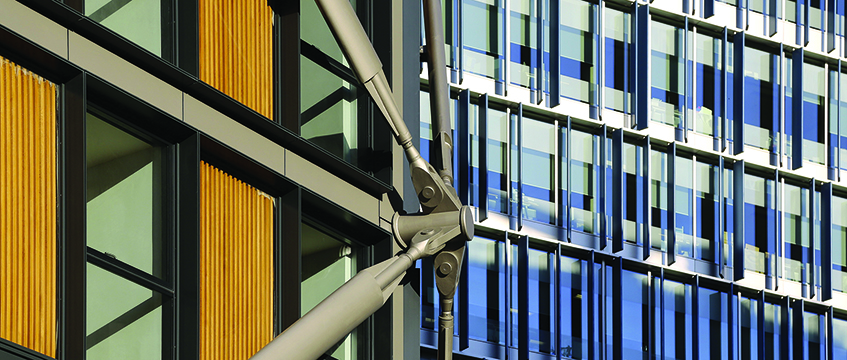With the Tate Modern case now concluded, it is timely to consider the circumstances in which a court will either decide to grant an injunction or damages in lieu.
Courts now have an unfettered discretion when considering whether to award an injunction or damages in the event of a nuisance. This is a significant shift from the days when damages would only be awarded in exceptional circumstances. It means that each case will turn on its own facts and issues such as public interest may come into play.
Earlier this year the Supreme Court found in favour of five Neo Bankside residents, holding that the viewing gallery at the Tate Modern’s Blavatnik Building had created a nuisance by interfering with the residents’ use and enjoyment of their flats (Fearn and others v Board of Trustees of Tate Gallery [2023] UKSC 4; [2023] EGLR 14). As recommended by Lord Leggatt in his majority judgment, the proceedings were then remitted to the original trial judge in the High Court, Sir Anthony Mann, to determine the appropriate remedy.
The usual remedy for a legal wrong is damages. However, in cases concerning an ongoing nuisance and thus a clear interference with property rights, there is a presumption that damages will not be adequate, and the prima facie remedy is an injunction. Where an injunction is granted, the defendant is prevented from continuing to use its property in a way that caused the nuisance. Last month, having been asked to elect by the court, the Tate chose not to argue that damages should be awarded instead of an injunction. The Tate has now agreed to a final order in which it has given an undertaking not to cause nuisance, effectively putting an end to the nuisance and disposing of the proceedings.
Questions raised
The outcome of this case raises the question of remedies in nuisance cases, and the circumstances in which a court will grant an injunction or damages in lieu. The ability for the courts to grant damages instead of an injunction was introduced by statute, originally the Chancery Amendment Act 1858 (Lord Cairns’ Act) and currently the Senior Courts Act 1981.
For many years, courts have been guided as to which remedy should be awarded by the rules laid down in the leading case of Shelfer v City of London Electric Lighting Co [1895] 1 Ch 287, which concerned noise nuisance caused by a neighbour’s electricity generator. The four conditions laid down by Shelfer which had to apply if damages were to be awarded were: (a) that the injury to the claimant’s rights were small; (b) that the damage was capable of being estimated in money; (c) that such monetary compensation would be limited; and (d) it would be oppressive to the defendant to grant an injunction.
These rules were reasserted by the Court of Appeal in Watson and others v Croft Promo-Sport Ltd [2009] EWCA Civ 15; [2009] 2 EGLR 57 when it upheld a finding of nuisance caused by noise from a defendant’s racing circuit but reversed a High Court’s decision to award damages, stating that there must be “exceptional circumstances” before an injunction should be refused.
This rather inflexible approach was relaxed when the Supreme Court considered remedies in Lawrence and another v Coventry (t/a RDC Promotions) and others (No 2) [2014] UKSC 46; [2014] 3 EGLR 71. The case concerned noise nuisance from a motocross track in Suffolk. The track was largely surrounded by agricultural land but there was a single house situated nearby that was affected by the noise. The Supreme Court allowed the appeal and granted an injunction.
Lord Neuberger, who gave the leading judgment, stated that the mechanical application of the four tests leading to damages being awarded only in “exceptional circumstances” was simply wrong in principle and that although prima facie the remedy for nuisance is an injunction, there may be circumstances where damages are more appropriate and there should be no inclination either way.
Going forward
So, the rules laid down in Shelfer, although they remain relevant to the exercise of the court’s discretion, are no longer decisive. The onus is on the defendant to show why an injunction should not be granted. The court now has a wider discretion and the choice between an injunction or damages depends on the relevant facts, circumstances, and arguments in the case. While this allows the courts greater flexibility, it also introduces much greater uncertainty.
In considering what circumstances might influence a court’s discretion, the Supreme Court justices in Lawrence were not entirely agreed on approach, but they were clear that public interest is a relevant factor. Any planning permission authorising the activity is also relevant, particularly if it demonstrates that the activity is of benefit to the public. The court will also consider the effect of any injunction on the viability of the defendant’s business and the public’s enjoyment of the activities carried on by that business.
In Fearn, the Supreme Court confirmed that a defendant’s activity might be relevant to the remedy. In his leading judgment, Lord Leggatt indicated that matters which needed to be addressed were whether there was a public interest in maintaining the viewing platform with a 360-degree view which was capable of overriding the prima facie remedy of an injunction.
Where a person’s right to the enjoyment of their home is disturbed by an invasion of privacy, it is hard to envisage when damages might be an appropriate remedy. Such a right can rarely be compensated for in monetary terms. This was the majority view in Lawrence. In such cases, it is hard to see what public interest considerations might outweigh this. Matters of national defence or the provision of public services such as healthcare may, but it seems unlikely that recreational facilities or the public’s enjoyment of those facilities would tip the balance.
Natasha Rees is senior partner at Forsters









